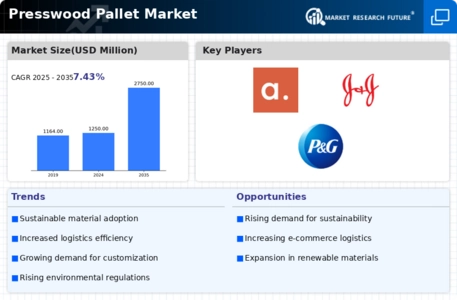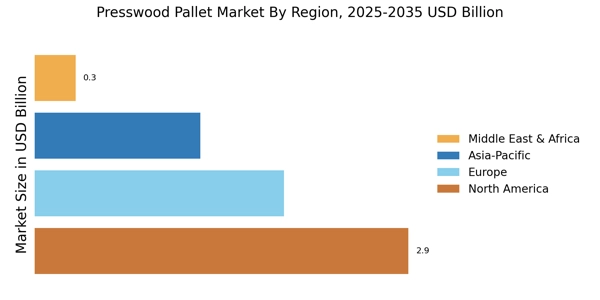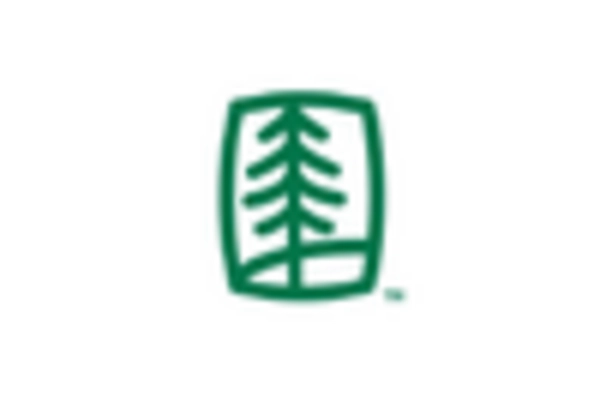Cost-Effectiveness
Cost-effectiveness is a vital driver influencing the Presswood Pallet Market. Presswood pallets offer a competitive advantage due to their lower production costs compared to traditional wooden pallets. The use of recycled materials in their manufacturing process contributes to reduced costs, making them an attractive option for businesses looking to optimize their logistics expenses. Additionally, the lightweight nature of presswood pallets results in lower shipping costs, further enhancing their appeal. As companies increasingly seek to streamline their operations and reduce overheads, the demand for cost-effective solutions like presswood pallets is expected to rise. This trend indicates a promising outlook for the Presswood Pallet Market as businesses prioritize budget-friendly alternatives.
E-commerce Expansion
The rapid expansion of e-commerce is a significant driver for the Presswood Pallet Market. As online shopping continues to gain traction, the need for efficient and reliable packaging solutions becomes paramount. Presswood pallets, known for their lightweight and sturdy characteristics, are increasingly favored for shipping goods. The e-commerce sector is projected to reach USD 6 trillion by 2024, creating a substantial demand for packaging materials, including presswood pallets. This growth presents an opportunity for manufacturers to cater to the logistics and distribution needs of e-commerce businesses. The Presswood Pallet Market stands to benefit from this trend, as companies seek to optimize their supply chains and reduce shipping costs.
Regulatory Compliance
Regulatory compliance regarding packaging materials is an essential driver for the Presswood Pallet Market. Governments worldwide are implementing stringent regulations aimed at reducing waste and promoting sustainable practices. These regulations often favor the use of eco-friendly materials, such as presswood pallets, which are compliant with international standards. As companies strive to adhere to these regulations, the demand for presswood pallets is likely to increase. For instance, the European Union's packaging waste directive encourages the use of recyclable materials, which aligns with the characteristics of presswood pallets. This regulatory landscape not only drives market growth but also encourages innovation within the Presswood Pallet Market.
Technological Innovations
Technological advancements play a crucial role in shaping the Presswood Pallet Market. Innovations in manufacturing processes, such as automated production lines and advanced molding techniques, enhance the efficiency and quality of presswood pallets. These technologies enable manufacturers to produce pallets that are not only durable but also cost-effective. Furthermore, the integration of smart technologies, such as RFID tracking, is becoming increasingly prevalent in the logistics sector. This integration allows for better inventory management and tracking of presswood pallets throughout the supply chain. As a result, the market is likely to witness a significant increase in demand for technologically advanced presswood pallets, which can cater to the evolving needs of various industries.
Sustainability Initiatives
The increasing emphasis on sustainability is a pivotal driver for the Presswood Pallet Market. Companies are increasingly adopting eco-friendly practices, leading to a surge in demand for sustainable packaging solutions. Presswood pallets, made from recycled wood fibers, align with these initiatives, offering a biodegradable alternative to traditional wooden pallets. As organizations strive to reduce their carbon footprint, the market for presswood pallets is projected to grow. According to recent data, the demand for sustainable packaging is expected to reach USD 500 billion by 2027, indicating a robust market potential for the Presswood Pallet Market. This trend not only enhances brand image but also meets regulatory requirements, further propelling the adoption of presswood pallets.


















Leave a Comment